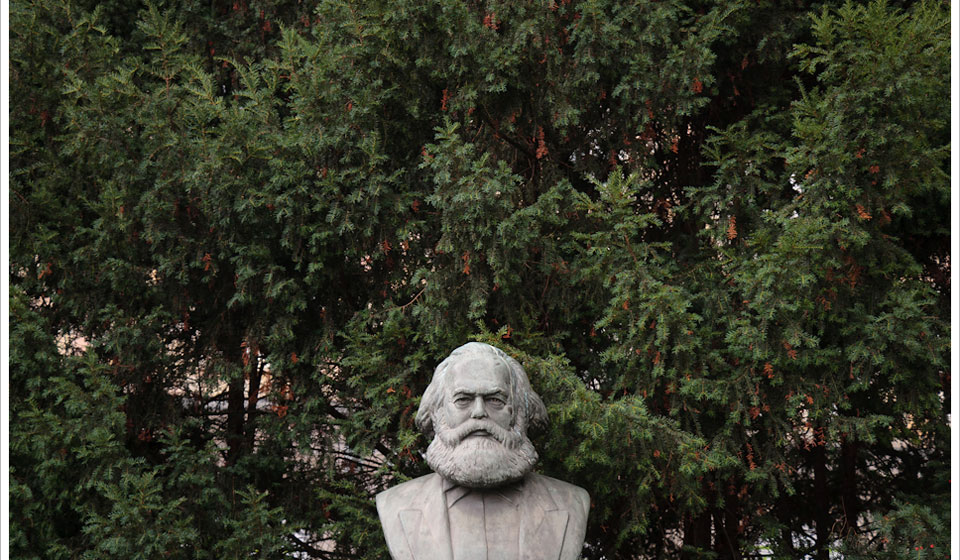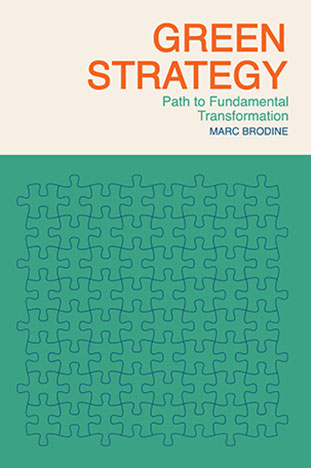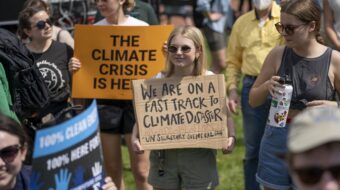
The warning signs of a planetary emergency abound: Record heat, massive wildfires, extreme weather events, declining agricultural yields, sea level rise, spreading diseases, mass species extinction, and a climate refugee crisis.
The latest report by the UN International Panel on Climate Change (IPCC) ominously warns the Earth’s inhabitants have 12 years to avert the worst climate catastrophes and “must act on a scale that has no documented historical precedent.”
Two other scientific reports further illustrate our planet in peril, including the U.S. government 4th National Climate Assessment and the National Oceanic and Atmospheric Administration on ice melt in the Arctic.
And no matter what steps humanity takes, the effects of these crises will persist for decades. Life is in the balance and every day counts. Meanwhile, the Trump administration blithely ignores science and dismantles government agencies that regulate polluters when both are essential to combat the climate crisis.
On Dec. 14, governments met in Poland to follow up the Paris Climate Accords. The Trump administration, which already announced the U.S. withdrawal from the pact, allied with Russia, Saudi Arabia, and Kuwait to block recognition of the dire warnings of the IPCC report.
But there is hope! It lies in the action of tens of millions of people and growing eco-consciousness across the planet, and the response by civil society, elected officials, federal, state governments, and municipalities.
Most nations—in fact, all nations of the world with the glaring exception now of the U.S.—are committed to the Paris Climate Accords and reducing greenhouse gas emissions, even though the level of those commitments is universally acknowledged to be woefully inadequate to reach net zero greenhouse gas emissions in 50 years. Also onboard are many state governments and cities in the U.S. despite the Trump administration.
One of the most exciting developments is the call for a Green New Deal, a mammoth national project (potentially without “historical precedent”) to transition the U.S. economy to sustainability by 2030, backed by a growing movement with support from elected officials.
Will humanity find a way before it is too late?
This is why Green Strategy: Path to Fundamental Transformation, by American Marxist environmentalist Marc Brodine, is a timely contribution and essential reading. The vast majority of works on the climate crisis only venture a deeper understanding of how bad things are and its causes and issue a call for urgent action.
But here we have a work that is also a manual for action which projects the movement needed to overcome the crisis and how to build it. Brodine brings insights from decades of experience in the environmental, labor, and mass democratic movements, including an understanding of Marxist strategy and tactics.
Brodine explains the Marxist methodology succinctly, how it can be employed to gain a deeper understanding of the ecological crisis and its roots in the capitalist mode of production. Marxism helps us understand the interconnectedness of all phenomena, ecological systems and processes, their interrelationship with human society, and how dialectical change happens, or what Steven Jay Gould described as “punctuated equilibrium.”
Green Strategy, in clear and compelling words, offers a picture of the climate and multiple ecological crises and their interrelationship. While the accumulation of greenhouses gases is the most tangible and urgent crisis, it is related to other disasters created by capitalism. These include the warming, acidification, and changing currents of the oceans; melting of the polar ice cap and Arctic permafrost leading to the mass release of methane; choking toxins and plastics in the water, land, and air; deforestation; depletion of soil from industrial agricultural practice; collapse of sea life, bird, and bee populations; looming exhaustion of vast aquifers; destruction of wetlands, etc.
Brodine explains how each system and process has its own tipping points, feedback loops with ominous implications, and interpenetration with other ecological processes and systems. All these crises must be addressed together.
When humans act on nature to produce the things needed for survival, we alter nature at the same time. That interaction is not abstract. It is governed by the dominant economic system, the capitalist mode of production in which distinct and irreconcilable classes relate to the production process. The capitalist class owns and controls the means of production and exploits the working class. Labor and nature are the sources of all new wealth created in this process.
Brodine explains how capitalism’s insatiable drive for maximum profits and wealth accumulation places it in conflict with nature. The capitalist system can only exist through infinite expansion of production which inevitably collides with the Earth’s finite resources and capacity to absorb the waste generated by production and consumption. The ecological crisis is also a crisis of capitalism itself.
Order Green Strategy: The Path to Fundamental Transformation from International Publishers.
The sheer concentration of wealth and scale of the exploitation of nature’s resources by the capitalist mode of production make contemporary monopoly capitalism particularly destructive. One hundred corporations rooted in the energy sector are responsible for 71 percent of greenhouse gas emissions. And just 25 corporations are the source of over half of all emissions since 1988.
The path of development, what we produce, and how it is created has been shaped by the capitalist drive for profits. For example, it is more profitable for transportation systems to be organized around automobiles and airplanes instead of mass transit and rail.
The massive transnational energy corporations are also the main obstacle to sustainability. Not only do they fight fiercely to protect their profits (witness the role played by the oil industry and Koch Brothers in undermining vehicle efficiency standards), but at risk are $2 trillion in fossil fuels investments, a huge factor in the systemic “inertia” described by Brodine.
These corporations, along with the military industrial complex, are the chief support behind the extreme political right, the GOP, Tea Party, and Trump.
The global transformative movement
Green Strategy offers a broad understanding of the movement needed to defeat these corporate forces, the relationship between reforms and revolutionary transformation, and strategy which involves stages of the struggle, political objectives and alliances, and tactics that result in unity and victory.
Drawing on examples of the Civil Rights and anti-Vietnam War movements, Brodine asserts that every arena of struggle (electoral, political, economic) and every method (voting, civil disobedience, boycott, etc.) must be utilized. All forms of struggle complement each other.
The government can play a dastardly role under the thumb of the energy corporations. But the government also has enormous leverage by mobilizing people and resources on a national basis, favoring sustainable strategies, the control of procurement, and funding scientific research and public health.
Therefore, ousting the fossil fuel-backed GOP from the White House, Congress, state legislatures, and municipal government and electing pro-environment governing coalitions in alliance with the Democratic Party, is a strategic imperative.
Majority movement—broad, diverse alliances
The climate and ecological crises are common problems of humanity and “require the collective thinking and action of humanity.” The path to fundamental transformation, as Brodine sees it, is through a majority movement in the U.S. and globally that vanquishes the corporate interests blocking change and reorganizes society from top to bottom.
The alliance at this stage includes sections of capital, which are temporary and unreliable allies but which nevertheless want to save the world for capitalist exploitation.
The ecological crisis is connected to every social issue, so it’s possible for the environmental movement to build unity with every cause. The struggle against environmental racism is a fight against racism and for the environment. The same interconnections hold true for living wage jobs, workers’, women’s, immigrants’, and voting rights, peace, and demilitarization, etc.
And if we look behind the opposition to environmental justice, racial, and gender equity, LGBTQ and immigrant rights, and attacks on democracy and the free press, etc., we find the same enemy: “The right-wing and its science-denying propagandists, funded by fossil fuel companies, are the source of the problem, the source of the main opposition to action.”
Of all social forces, Brodine singles out the leading role of the multi-racial working class and the need for global working-class solidarity. The working class constitutes the overwhelming majority—including of voters—and has organic connections with core allies among people of color, women, and youth. And workers have a crucial place in the production process with the ability to shut the whole thing down.
However, while groups like the Blue-Green Alliance and Labor Network for Sustainability are pushing the environment to the top of labor’s agenda other sections of labor have taken wrong positions, as the building trades did in supporting the XL pipeline. This put them at odds with the environment and wellbeing of multi-racial working-class communities.
At other times, environmentalists have dismissed job security concerns of workers, for example in hard-pressed coal mining communities. A goal of the environmental movement, according to Brodine, should be to work with organized labor to make the environment a top issue, to champion the cause of labor and help bring the working-class into leadership of the struggle.
Calling for a Green New Deal and the creation of millions of new jobs building a green infrastructure and adapting the country to the ravages of climate change is a project that can unite environmentalists, organized labor and distressed working-class communities.
Environmentally conscious socialism
Brodine acknowledges the significance of individual steps many of us take to lessen our carbon footprints, like buying organic, recycling, composting, driving hybrid vehicles or riding bicycles, even becoming vegetarian. He also discusses technological breakthroughs such as solar, wind, and geothermal. But personal habits and technological innovations by themselves are not enough.
By identifying capitalism as the chief culprit of the environmental crisis, Brodine calls for a revolutionary reorganization of society: To renewable energy, an industrial production process minus pollution, agricultural production based on organic, labor-intensive practices, and working-class democratic control over the economy, distribution, and transport systems, etc.
This means the working class and its allies will direct economic and social development according to the needs of humanity and nature.
According to Brodine, the climate and ecological crises are radicalizing millions about the need for environmentally conscious socialism, the vast extension of political and economic democracy to restore society to equilibrium with nature.
In response to assertions that the track record of socialism has been a disaster for the environment, Brodine acknowledges the complicated history of building socialism under backward economic and social conditions surrounded by hostile capitalist countries. After the October Revolution, the Soviet Union instituted far-sighted eco-friendly policies which were jettisoned during the forced march toward industrialization and collectivization to prepare for war against Nazi Germany.
But Brodine also shows the incredible economic, social, technological, and scientific achievements, including laying the foundations for climate science, made to correct environmentally harmful policies.
He also describes the evolution of environmental policy in China when grassroots movements arose in response to ecologically destructive development and cities being overwhelmed by air pollution. China is on the path, not without enormous problems, to build an “ecological civilization,” a concept enshrined in its constitution. China leads the world in the production of solar panels, wind turbines, and high-speed trains.
And Cuba, which was forced onto an alternative development path after the collapse of the Soviet Union in 1989 now leads the world in large scale organic farming and recycling.
Both Cuba and China are engaged in the most substantial reforestation efforts in the world and offer an alternative economic model for developing countries that bypasses capitalist production methods. The lesson, writes Brodine, is that socialist economic development must be combined with ecological consciousness and environmental science.
But Brodine also stresses that humanity can’t wait for socialism. “Historically unprecedented” change must be forced on the capitalist system and governmental policies now. This may actually become the point of departure for the transitional path to democratic and sustainable socialism in the U.S.
After reading Green Strategy, I found my vision expanded and my understanding deepened. But above all, I came away optimistic that the fight against existential threats to life on Earth can be won.
Green Strategy: Path to Fundamental Transformation
By Marc Brodine
New York: International Publishers, 2018
310 pages, $14.99













Comments